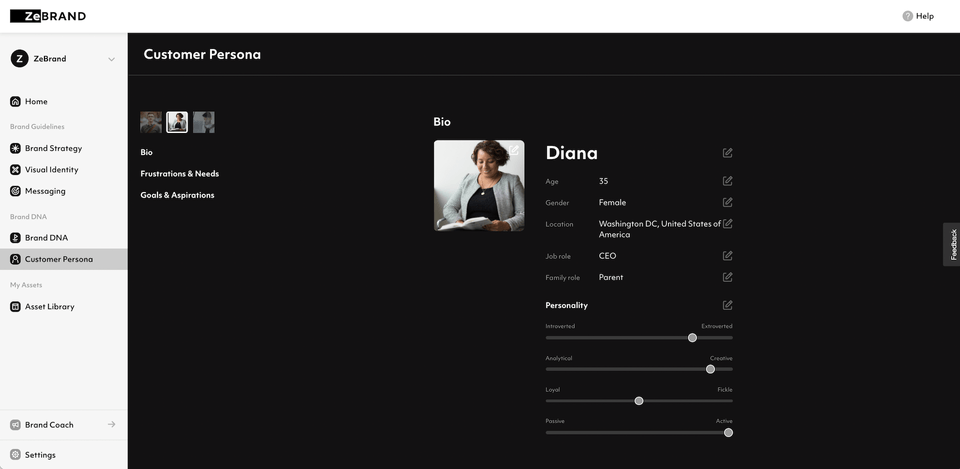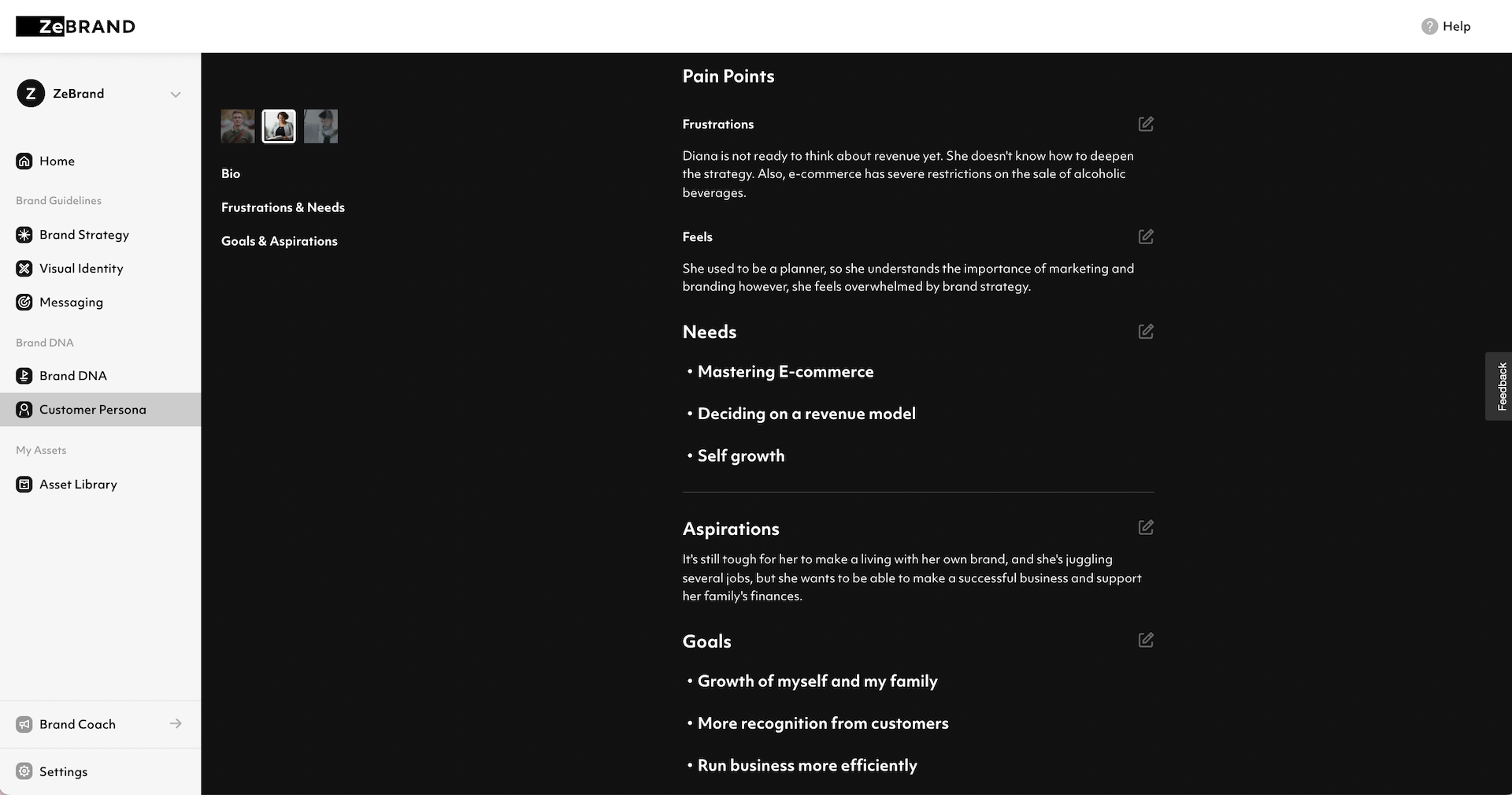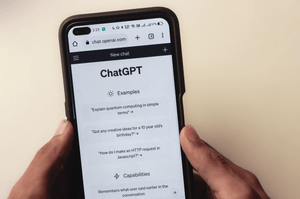Your Simple Guide to Creating a Compelling Customer Persona

ZeBrand's Customer Persona module within Brand DNA
- What is a customer persona?
- Does my business really need a customer persona?
- Here’s how to write your detailed customer persona:
- Need inspiration? Check out this customer persona example:
- The biggest traps we see businesses fall into when building their persona:
- So you’ve defined your ideal customer, now what?
The most effective marketing strategies are those that are perfectly tailored to your audience. They really resonate with your ideal customer, catching their attention and sparking them to action.
To launch a marketing strategy that cuts through the noise and targets your dream customer or client, you’ve got to know who they are! What do they like? Where do they hang out? What websites and social platforms do they frequent? What’s their household like?
These are just a few questions brands need to know before they launch a marketing campaign, new product, or additional business location. In fact, the answers to these questions should guide every decision the company makes.
The best way to get to know exactly who you’re in business for is to develop a customer persona. With a well-researched persona in hand, your brand can be empowered to make effective, targeted decisions with ease.
What is a customer persona?
A customer persona is like a character description of the kind of person you want to work with. It’s a fictional profile based on real-life data. To develop a persona, you start by learning as much as you can about your best customers. Then, analyze the most common traits, attitudes, habits, and perspectives among this group of people. Once that data is compiled, you can combine those valuable insights into one robust character description.
When you’re gathering data for your customer persona, there are a variety of sources you can tap into. You can conduct customer interviews or surveys. You can host focus groups to learn more about your customers’ needs and how they use your products. You can even collect website and social media analytics. When developing your persona, the more information you have, the more accurate your character description becomes.
Does my business really need a customer persona?
Yes! No matter your business’ size, age, product, or service, a persona is a powerful tool. And it’s not just for sales. A clear, detailed persona helps align your entire company, from the sales team to customer support to marketing to R&D. And it’s a critical part of your business’ brand.
For example, say you know your ideal customer for your clothing store is a young male with an active lifestyle. If you stop there, without using your customer persona to develop your brand, how will your marketing team know what advertising strategies will actually reach this customer? Will your product developers know what style of activewear this customer prefers? The sales team will be left wondering, what price point is realistic for this buyer’s typical budget?
The questions and guessing are endless. Without a detailed, well-researched customer persona, your brand has only half the story.
Here’s how to write your detailed customer persona:
You know what a customer persona entails and why your brand needs one. Here’s how to build one for your own business:
- Do your research. You can gather the data you need through customer surveys, interviews, social media, and website analytics.
- Analyze the data to find trends. What commonalities do you see among your best customers? Are they of a similar age? Live in the same area? Have similar pain points? Use the same social media platforms? Analyze the research you gathered in step one and note all the commonalities that exist.
- Determine what they need and how you can help. Take your compiled data a step further to see how your business can address the biggest problems your customers face. Can you pinpoint their greatest needs? Draw parallels between those needs and your offerings.
- Build the persona. By now, you’ve got all the research you need to fill out your persona profile. Give your customer a name, age, job, and other details that complement your compiled data. Remember, this is more than just a list of characteristics. You’re creating a complete ideal customer based on everything you’ve learned about your most loyal brand fans!
Need inspiration? Check out this customer persona example:
Here’s an example of how you can build a customer persona at ZeBrand:

You choose a few fictional details about your ideal customer, like their job and family role. These are based on extensive market research to learn what our best customers are really like. Next, we build her personality based on surveys and feedback responses.

We continue to fill in details about our ideal customers, including their pain points, aspirations, and goals. Then we talk about how our service helps this customer reach her goals and solve her frustrations.
By the time you’ve finished your persona, you should have most of these details listed:
- A fictional name
- Age
- Gender
- Geographical location and home type
- Family role
- Job role
- Income bracket
- Daily routine
- Interests and hobbies
- Internet browsing habits
- Pain points
- Goals
- Fears
- Common objections to your product or service
- Any other distinguishing characteristics you notice in your research
Tip: if you’re new to writing a profile like this, start with a customer persona template!
ZeBrand will guide you through building customer personas. Just fill in the details you gathered during your customer research phase.
The biggest traps we see businesses fall into when building their persona:
- Creating too many personas. Depending on how many products or services you offer, you may have just one or two personas or 15+ different personas. But if you’re new to developing these profiles, consider starting with just one. For your first persona, you can focus on making the profile as detailed, accurate, and clear as possible. Once you’ve had some practice tailoring your business to this ideal customer, you can start adding more.
- Relying on opinions or intuition about your customers. Sometimes when we spend so much time focused on our brand, we develop assumptions about our customers and clients that aren’t completely accurate. Even if you’ve been in business for a while, it’s always best to look at real data when developing your persona. You might just get insights that surprise you!
- Limiting the details. As a rule of thumb, your completed persona should be about as long as a dating profile. Not a novel, but thorough enough to guide your brand!
So you’ve defined your ideal customer, now what?
Your detailed customer persona is the roadmap for your business. It’s a tool to help you focus your marketing efforts (and budget) on the content and platforms your customer engages with most.
For example, if your ideal customer’s most-used social media platform is Instagram, you may choose to focus your content strategy on this channel. Videos generate the best engagement on the platform, so creating high-quality, interesting video content on Instagram could be a great way to reach your customers where they’re at.
You can use your customer persona to guide the development of your branding and messaging too. Once you’ve gathered your customer data, you’ll know what opinions, pain points, and causes your customers care about most. Consider how you can let those characteristics shape your messaging. With your persona as your guide, how can you speak directly to the unique problems your key customers face?
Creating a customer persona takes time and effort, but the insights are more than worth the work
It can be a daunting process. But once you’ve got your persona in hand, you have a roadmap for your business. If you need a partner to help organize your customer data to develop personas, ZeBrand can help. To build a brand with us, click here to get started.


